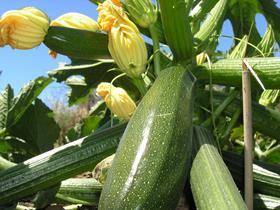
Spanish courgettes are under threat from a virulent virus that is sweeping through the south of the country and has already caused significant losses to production.
Tomato Leaf Curl New Delhi Virus (ToLCNDV) is transmitted from plant to plant by White Fly, common throughout Spain, and results in the complete collapse of the plant. It has caused major damage to open and covered production in Almería, where the majority of Spain’s courgettes are grown, and is now thought to be spreading into neighbouring Murcia.
Angel López, technical director at Almerian cooperative Agroponiente, said the virus was first identified in July and has since spread rapidly. “We’re working hard to stop its advance but so far no varieties resistant to the virus have been identified,” he said. “The only way to control it is to eradicate the White Fly themselves.”
He estimated that 50-60 per cent of production had been lost to date, causing prices to rocket. In the past week, the price at origin had risen by 400 per cent to €2.50/kg.
López said developing a resistant strain was some way off and it would take two to four years before new varieties would become available on the market. Until then, he feared the virus would go on advancing rapidly.
Abelardo Hernández of Murcian exporter association Proexport said it was too early to estimate the incidence of ToLCNDV in the province as information was still being gathered. “We think the virus has been here for about 10 years and are trying to understand why it has become so virulent this year,” he said. “One theory is that the unseasonably hot autumn has made it more prevalent.”
Describing the situation as “worrying”, Hernández said it would become very serious for the industry if the virus were to follow a similar course next year.
Temperatures have dropped in the past week and it is hoped this will slow the progress of the virus due to the reduction of White Fly activity. However, the colder weather is also slowed the development of the remaining crop, resulting in further shortages on the European market.



